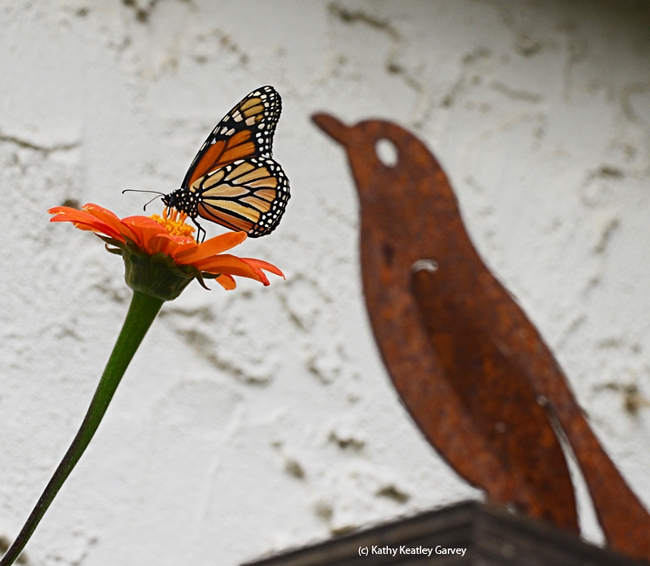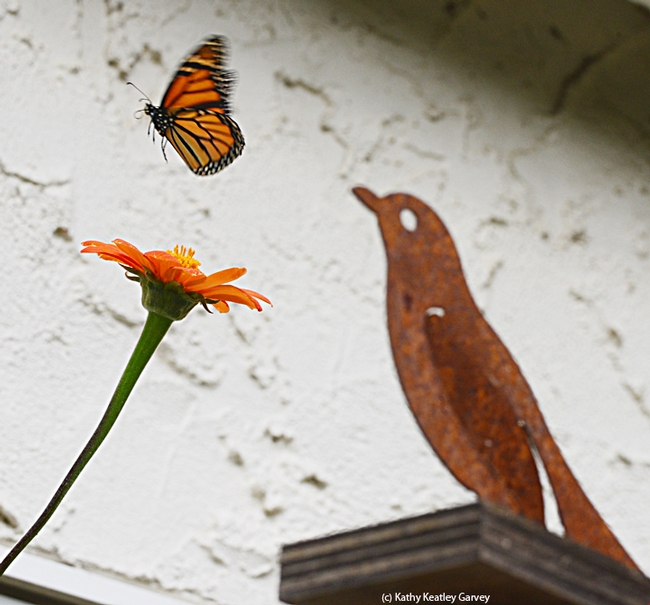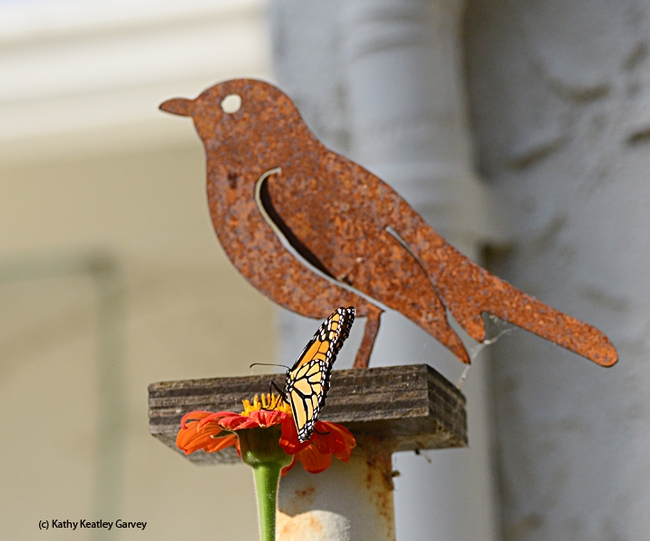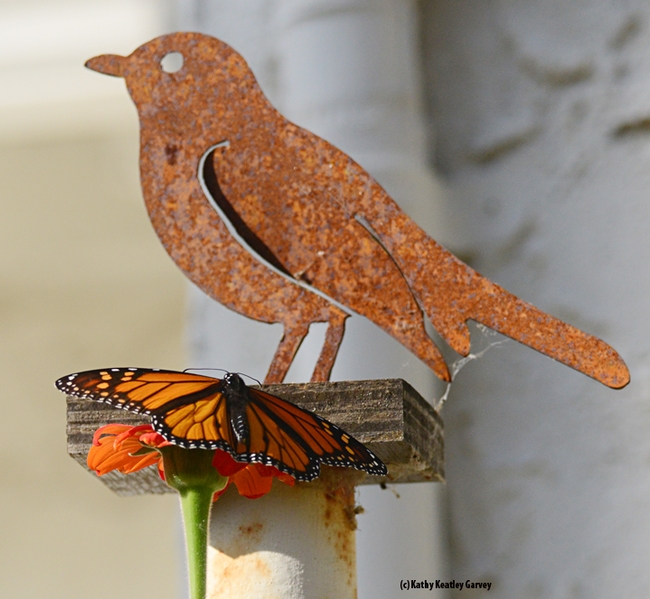A monarch butterfly fluttered into our pollinator garden in Vacaville yesterday and sipped nectar from a Mexican sunflower (Tithonia) as a bird looked on.
Well, sort of looked on.
The bird was decorative art. The monarch was real.
Now if that bird had been real, the monarch may have been a meal.
It would not have tasted very good, though, due to the infamous cardenolide defense, which the monarch gets in its caterpillar stage while chowing down milkweed, its host plant.
Yes, birds eat monarch butterflies, but they don't eat them like people eat potato chips.
We remember the Linda Fink-Lincoln Brower research article published in May 1981 in the journal Nature about how some birds can overcome the cardenolide defense of monarch butterflies in Mexico.
The abstract:
"Flocks of black-backed orioles (Icterus abeillei Lesson) and black-headed grosbeaks (Pheucticus melanocephalus Swainson) eat several hundred thousand monarch butterflies (Danaus plexippus L.) in the dense overwintering colonies in central Mexico, and in 1979 were responsible for over 60% of the butterfly mortality at several sites. Such predation is unusual because, during larval development the aposematically coloured monarch butterfly sequesters cardenolides from its milkweed foodplants (Asclepiadaceae). These bitter-tasting heart poisons cause vomiting in 12 species of birds in 9 families, although the domestic chicken, Japanese quail, hedgehog, mouse and sheep have been shown to be insensitive to their emetic effects. Extensive predation of monarch butterflies by birds has never been observed except in Mexico. We report here that the Mexican butterflies are weakly emetic, and that taste discrimination by orioles and cardenolide insensitivity of grosbeaks allow these birds to feed freely on monarch butterflies."
We've seen birds scatter the overwintering monarchs roosting in the eucalyptus trees at Pacific Grove, Santa Cruz, but never witnessed an all-you-can-eat buffet. They ate a few, though.
Attached Images:

A monarch butterfly sips nectar from a Mexican sunflower (Tithonia) in front of a bird, decorative art. (Photo by Kathy Keatley Garvey)

Up, up and away--but not because the bird was a threat. (Photo by Kathy Keatley Garvey)

The monarch returns to the bird sighting, this time to sip nectar by its feet. (Photo by Kathy Keatley Garvey)

The monarch spreads its wings. The bird cannot. (Photo by Kathy Keatley Garvey)